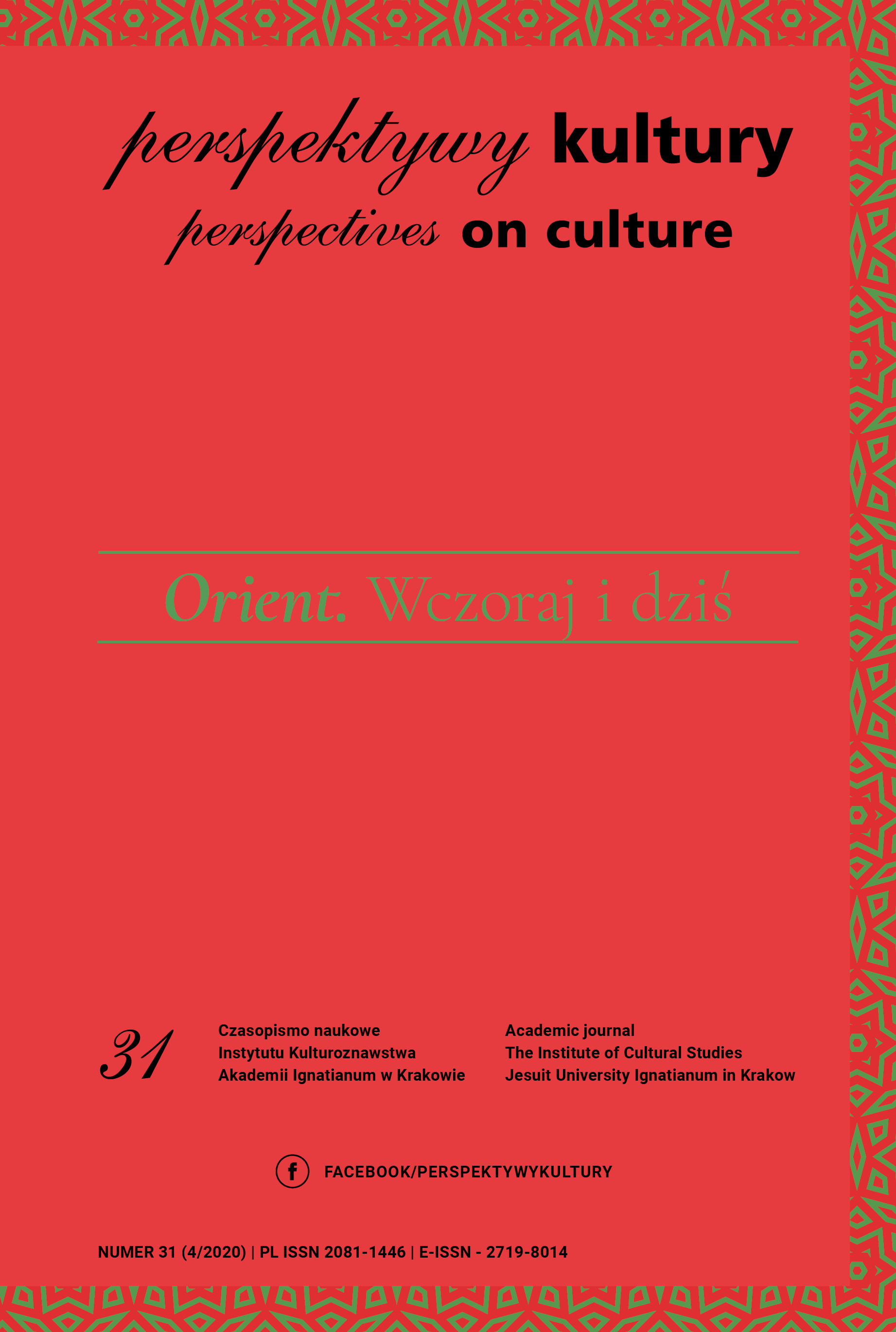Silence, Spirituality and Contemplative Experience in Contemporary Abstract Paintings. Analysis of Selected Examples
Abstract
In recent decades, there has been increasing interest in including the spiritual dimension in artistic practice and in discourse on art. This phenomenon seems to be universal but is definitely not homogenic. I examine it by referring to meaningful examples of abstract paintings from different cultural and religious backgrounds. I analyze artworks by two contemporary bicultural painters: the American-Japanese artist, Makoto Fujimura, and American-Iranian artist, Yari Ostovany. The Polish non-figurative artist Tadeusz G. Wiktor is also considered. Their oeuvre can be set within the larger context of great religious and spiritual traditions. I stress the influence of Oriental legacy in contemporary examples of abstract art. I investigate how the selected artworks refer to an invisible reality, and I focus especially on the silence they evoke. My aim is to show how contemporary non-figurative art can influence the viewer by creating a contemplative experience. I also place the selected artworks in the theoretical contexts presented by the artists themselves and refer to classical and contemporary texts.
References
Barr, A.H. (1986). Cubism and Abstract Art. New York & Cambridge, MA.: The Museum of Modern Art & The Belknap Press of Harvard University Press.
Eliade, M. (1985). Symbolism, the Sacred, the Arts. New York: Continuum.
Elkins, J. (2004). On the Strange Place of Religion in Contemporary Art. New York & London: Routledge.
Fanning, L.K. (Ed.). (2018). Encountering The Spiritual in Contemporary Art. New Haven & London: Yale University Press.
Fujimura, M. (2016). Silence and Beauty. Downers Groove: IVP Books.
Fujimura, M. (2017). Culture Care. Downers Groove: IVP Books.
Fuller, P. (1983). Art and Psychoanalysis. London: Writers and Readers.
Gilbert-Rolfe, J. (1999). Beauty and the Contemporary Sublime. New York: Alworth Press.
Kandynsky, W. (1996). O duchowości w sztuce [Concerning the Spirirual in Art] (S. Fijałkowski, Trans.). Łódź: Państwowa Galeria Sztuki.
Kuspit, D. (1986). Concernig the Spiritual in Contemporary Art. In M. Tuchman (Ed.), The Spiritual in Art: Abstract Painting 1890–1985 (pp. 313–325). Los Angeles & New York: Los Angeles County Museum of Art & Abbeville Press.
Kuspit, D. (2005). The End of Art. Cambridge: Cambridge University Press.
Lipsey, R. (1997). An Art of Our Own. The Spiritual in Twenttieth-Century Art. Boston & London: Shambala.
Merton, T. (2004). The Inner Experience. Notes on Contemplation. New York: Harper One.
Otto, R. (1959). The Idea of the Holy; an Inquiry into the Non-rational Factor in the Idea of the Divine and its Relation to the Rational (J.W. Harvey, Trans). Harmondsworth: Penguin Books.
Ringbom, S. (1966). Art in the Epoch of Great Spiritual Occult Elements in the Early Theory of Abstract Painting. Journal of the Warburg and Courtauld Institutes 29: 386–418.
Ringbom, S. (1986). Transcending the Visible: The Generation of the Abstract Pioneers. In M. Tuchman (Ed.), The Spiritual in Art: Abstract Painting 1890–1985 (pp. 131–153). Los Angeles & New York: Los Angeles County Museum of Art & Abbeville Press.
Spretnak, Ch. (2014). The Spiritual Dynamic in Modern Art. New York: Palgrave Macmillan.
Stano, B. & Daca, A. (Eds.). (2019). Metafizyka obecności. Inspiracje religijne w dziełach artystów krakowskich 2000–2019 [Metaphysics of Presence. Religious Inspirations in Artworks by Krakow Artists 2000–2019]. Kraków: Uniwersytet Pedagogiczny.
Wiktor, T.G. (1994). Teksty artystów. Tadeusz Gustaw Wiktor [Texts of the Artists: Tadeusz Gustaw Wiktor]. Kraków: QQPress.
Tuchman, M. (Ed.). (1986). The Spiritual in Art: Abstract Painting 1890–1985. Los Angeles & New York: Los Angeles County Museum of Art & Abbeville Press.
Wunenburger, J.-J. (2011). Filozofia obrazów [Philosophy of Images] (T. Stróżyński, Trans). Gdańsk: Słowo/obraz terytoria.
Yoon, J. (2010). Spirituality in Contemporary Art. The idea of the Numinous. London: Zidane Press.
Copyright (c) 2020 Jesuit University Ignatianum in Krakow

This work is licensed under a Creative Commons Attribution-NoDerivatives 4.0 International License.
Autor, zgłaszając swój artykuł, wyraża zgodę na korzystanie przez Wydawnictwo Uniwersystet Ignatianum z utworu na następujących polach eksploatacji:
- utrwalania utworu w formie papierowej, a także na nośniku cyfrowym lub magnetycznym;
- zwielokrotnienia utworu dowolną techniką, bez ograniczenia ilości wydań i liczby egzemplarzy;
- rozpowszechniania utworu i jego zwielokrotnionych egzemplarzy na jakimkolwiek nośniku, w tym wprowadzenia do obrotu, sprzedaży, użyczenia, najmu;
- wprowadzenia utworu do pamięci komputera;
- rozpowszechniania utworu w sieciach informatycznych, w tym w sieci Internet;
- publicznego wykonania, wystawienia, wyświetlenia, odtworzenia oraz nadawania i reemitowania, a także publicznego udostępniania utworu w taki sposób, aby każdy mógł mieć do niego dostęp w miejscu i czasie przez siebie wybranym.
Wydawca zobowiązuje się szanować osobiste prawa autorskie do utworu.





